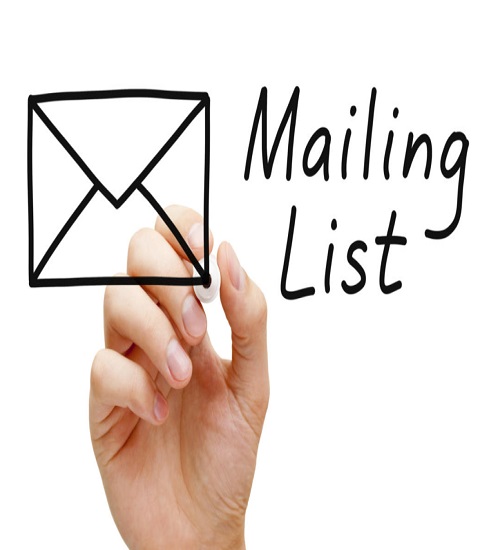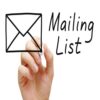Description
Email Database: Enhancing Marketing Strategies through Targeted Communication
In today’s digital age, effective communication is paramount for businesses to thrive. Email marketing has emerged as a powerful tool to connect with potential customers and nurture existing relationships. However, to maximize the impact of email campaigns, businesses require a robust and reliable email database. This article explores the significance of an email database and offers insights into its benefits, strategies for building and maintaining one, and key considerations for successful email marketing campaigns.
Table of Contents
- Introduction
- The Importance of an Email Database
- Building an Email Database
- 3.1 Opt-In Forms and Lead Magnets
- 3.2 Website Pop-Ups and Banners
- 3.3 Social Media and Landing Pages
- Segmenting and Targeting Your Email List
- Crafting Engaging Email Content
- 5.1 Personalization and Customization
- 5.2 Compelling Subject Lines
- 5.3 Clear and Concise Messaging
- 5.4 Call-to-Action (CTA)
- Automating Email Campaigns
- Analyzing and Optimizing Campaign Performance
- 7.1 Open Rates and Click-Through Rates (CTR)
- 7.2 Conversion Tracking and A/B Testing
- 7.3 Subscriber Engagement Metrics
- Ensuring Compliance with Email Marketing Regulations
- Conclusion
- FAQs
1. Introduction
In today’s digital landscape, email marketing remains a cost-effective and efficient means of reaching a wide audience. However, to truly make an impact, businesses must possess a high-quality email database. This article explores the importance of an email database, strategies for building and maintaining one, and how to leverage it for successful email marketing campaigns.
2. The Importance of an Email Database
An email database serves as the foundation for effective email marketing. It allows businesses to establish direct lines of communication with their target audience, nurture relationships, and promote products or services. By having a database of engaged subscribers, businesses can significantly enhance their marketing strategies.
3. Building an Email Database
3.1 Opt-In Forms and Lead Magnets
One of the most effective ways to build an email database is through opt-in forms and lead magnets. Placing well-designed opt-in forms on strategic locations across your website enables visitors to subscribe to your email list. Offering lead magnets such as e-books, whitepapers, or exclusive discounts in exchange for email addresses can entice visitors to sign up.
3.2 Website Pop-Ups and Banners
Website pop-ups and banners can be valuable tools for capturing visitors’ attention and encouraging them to join your email list. Implementing exit-intent pop-ups or timed banners with compelling offers can effectively convert website visitors into subscribers.
3.3 Social Media and Landing Pages
Leveraging the power of social media platforms allows businesses to expand their reach and attract new subscribers. By directing social media followers to dedicated landing pages with engaging content and subscription forms, businesses can grow their email database while providing valuable information to potential customers.
4. Segmenting and Targeting Your Email List
Segmentation is crucial for delivering personalized and relevant content to subscribers. Categorize your email database based on demographics, preferences, or past interactions to create targeted email campaigns. By tailoring messages to specific segments, businesses can increase open rates, engagement, and conversions.
5. Crafting Engaging Email Content
Creating compelling email content is vital to capturing subscribers’ attention and driving action.
5.1 Personalization and Customization
Personalize emails by addressing subscribers by their name and sending tailored content based on their preferences or past purchases. Customization adds a human touch, making subscribers feel valued and increasing the likelihood of engagement.
5.2 Compelling Subject Lines
Subject lines play a pivotal role in email open rates. Craft attention-grabbing subject lines that pique curiosity, offer solutions, or create a sense of urgency. A well-crafted subject line entices subscribers to click and explore further.
5.3 Clear and Concise Messaging
Keep email content concise, easily scannable, and visually appealing. Utilize subheadings, bullet points, and relevant visuals to enhance readability and convey the message effectively. Clearly communicate the value proposition and call-to-action to drive engagement.
5.4 Call-to-Action (CTA)
Include a clear and compelling call-to-action (CTA) in each email. Whether it’s directing subscribers to a landing page, encouraging them to make a purchase, or inviting them to participate in a survey, a well-placed CTA prompts action and facilitates conversions.
6. Automating Email Campaigns
Automation streamlines email marketing efforts, allowing businesses to send timely and targeted messages. Utilize marketing automation platforms to set up automated email sequences triggered by specific subscriber actions or events. This ensures consistent communication with subscribers while saving time and effort.
7. Analyzing and Optimizing Campaign Performance
Monitoring and analyzing email campaign performance is essential for refining strategies and improving results.
7.1 Open Rates and Click-Through Rates (CTR)
Track open rates and click-through rates to gauge subscriber engagement and the effectiveness of your email content. Identify patterns and trends to optimize future campaigns.
7.2 Conversion Tracking and A/B Testing
Implement conversion tracking to measure the success of your email campaigns in driving desired actions. Additionally, conduct A/B testing by creating variations of subject lines, content, or CTAs to identify the most effective elements and refine your approach.
7.3 Subscriber Engagement Metrics
Evaluate subscriber engagement through metrics like the number of unsubscribes, spam complaints, or inactive subscribers. By monitoring these metrics, businesses can identify issues and take corrective actions to maintain a healthy email list.
8. Ensuring Compliance with Email Marketing Regulations
Adhering to email marketing regulations is crucial for maintaining trust and avoiding legal issues. Familiarize yourself with laws such as CAN-SPAM Act or GDPR to ensure your email marketing campaigns comply with the necessary requirements and regulations.
9. Conclusion
Building and maintaining a high-quality email database is the key to successful email marketing. By implementing strategies to grow and engage your subscribers, crafting compelling content, and utilizing automation and analytics, businesses can enhance their marketing efforts, foster customer relationships, and drive conversions.
FAQs
Q1. How often should I send emails to my subscribers?
It depends on your audience and the nature of your business. Test different frequencies and monitor subscriber engagement to find the optimal balance between staying top-of-mind and avoiding email fatigue.
Q2. Can I purchase an email database?
It is not recommended to purchase email databases, as the contacts may be outdated or unengaged. Building an organic email database ensures the quality and relevance of your subscribers.
Q3. Should I include visuals in my emails?
Visuals can enhance the impact of your emails and make them more visually appealing. However, ensure the images are optimized for quick loading and include alternative text for accessibility purposes.
Q4. How can I measure the success of my email campaigns?
Track key metrics such as open rates, click-through rates, conversion rates, and subscriber engagement to assess the effectiveness of your email campaigns. Compare results over time and make data-driven decisions for optimization.
Q5. What is the best time to send emails for maximum engagement?
The ideal send time can vary depending on your target audience and industry. Conduct A/B testing with different send times to determine when your subscribers are most likely to engage with your emails.
In conclusion, an email database is a valuable asset for businesses seeking to leverage the power of email marketing. By employing effective strategies for building, maintaining, and engaging subscribers, businesses can enhance their marketing efforts, nurture customer relationships, and drive conversions. Embrace the potential of email databases to unlock new opportunities and take your marketing strategies to new heights.
















Reviews
There are no reviews yet.